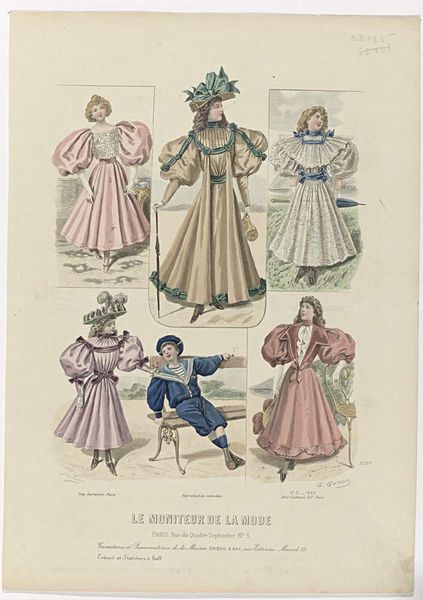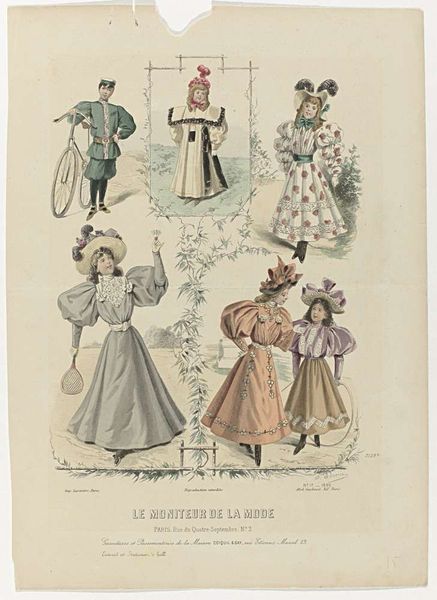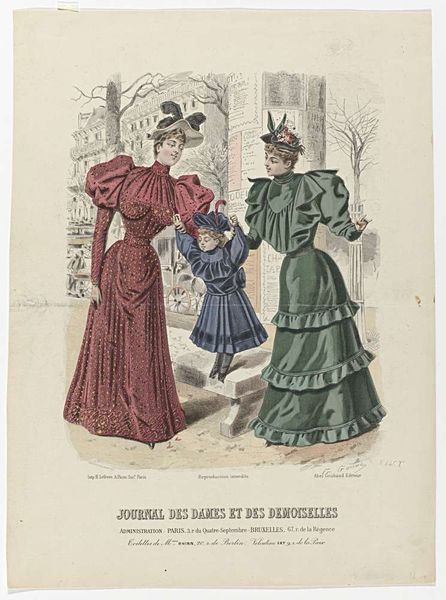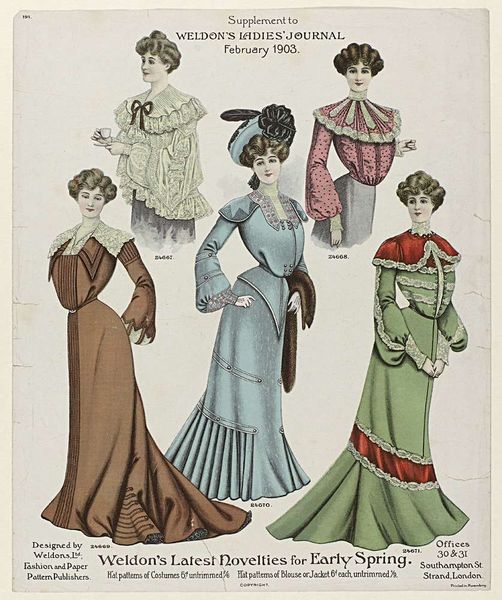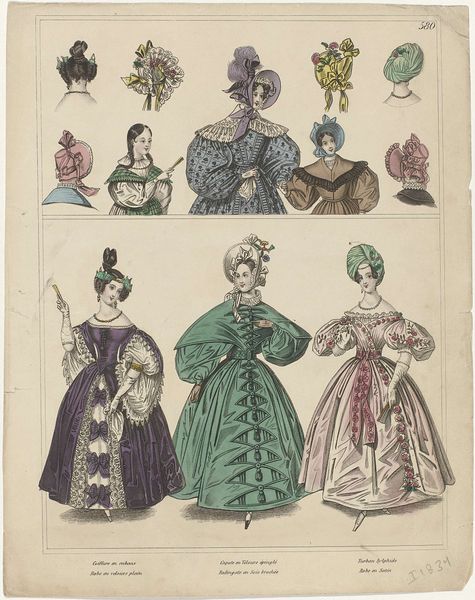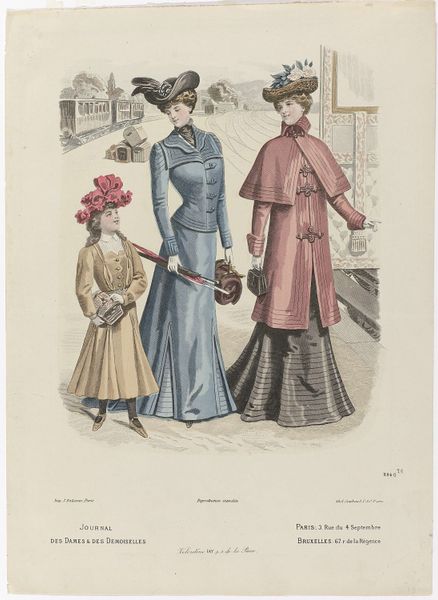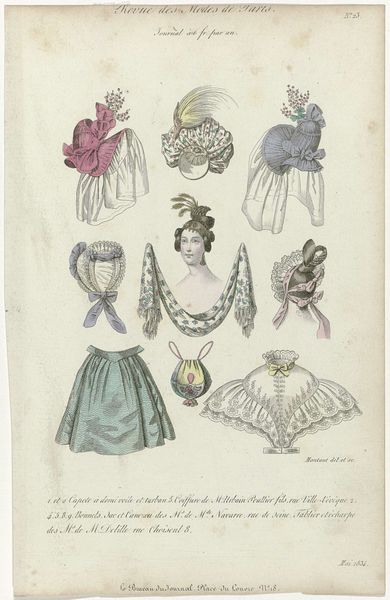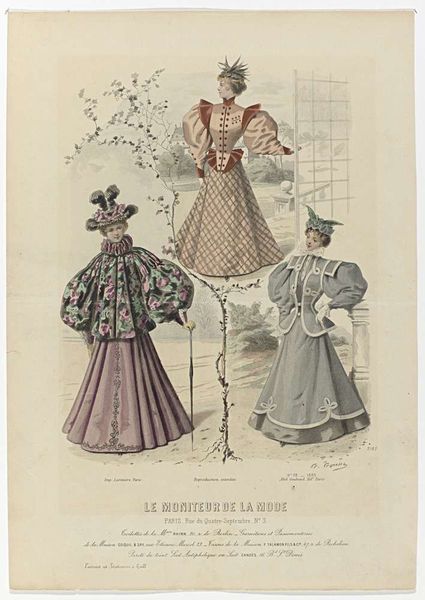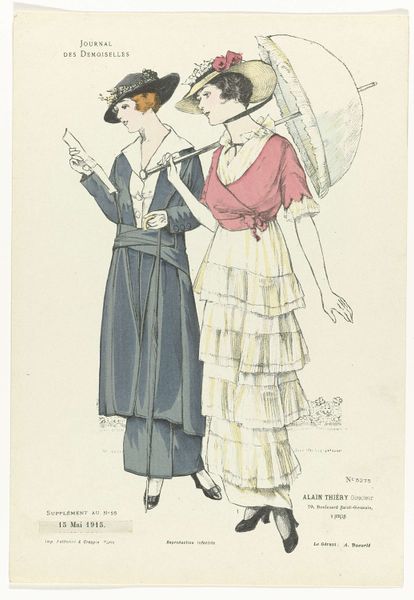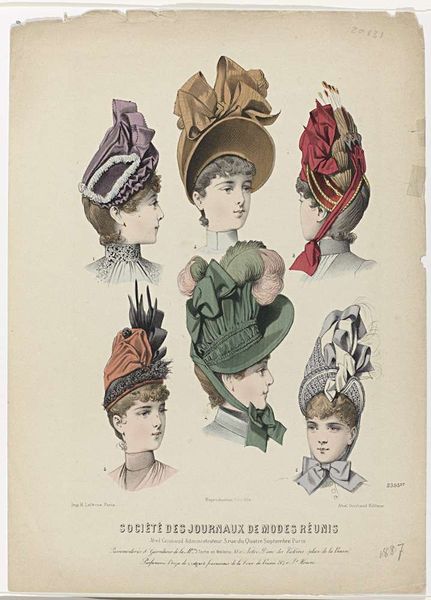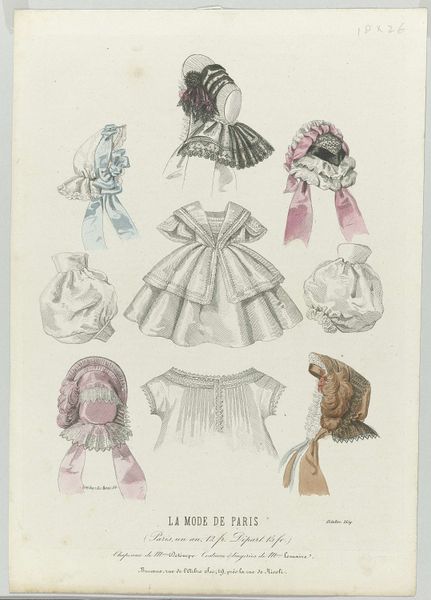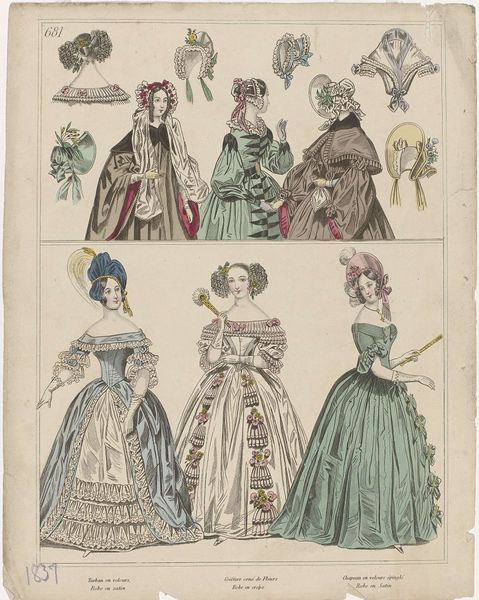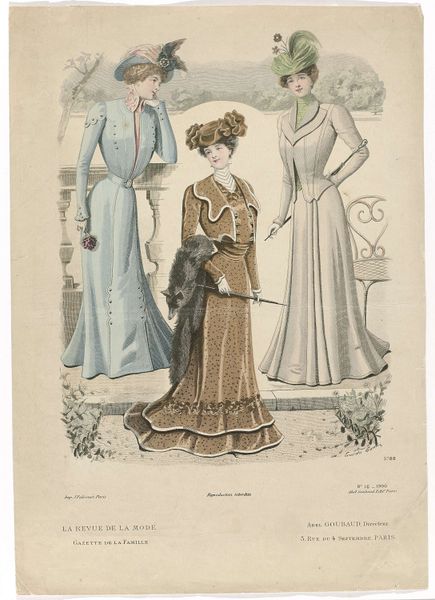
Le Moniteur de la Mode, 1897, Nr. 3427e, No. 31: Broderies et Passementeries (...) 1897
0:00
0:00
print, watercolor
#
portrait
# print
#
figuration
#
watercolor
#
watercolour illustration
#
decorative-art
#
dress
Dimensions: height 384 mm, width 256 mm
Copyright: Rijks Museum: Open Domain
This fashion plate, created by A. Portier in 1897, features detailed depictions of children's dresses, showcasing the latest trends in embroidery and trimmings. What strikes me are the hats—each adorned with elaborate bows and feathers—symbols of status and aspirations. The bow motif, though seemingly simple, carries a rich history. From ancient Rome, where knots symbolized commitment and power, to the Renaissance, where ribbons and bows denoted elegance and refinement, the bow has evolved across cultures and eras. Its reappearance here, in late 19th-century fashion, speaks to its enduring appeal as an emblem of youthful innocence and bourgeois respectability. The psychological resonance of these images lies in their ability to evoke nostalgia and longing. The bows, the delicate fabrics, and the playful poses trigger collective memories of childhood—a period idealized as a time of carefree joy. These fashion plates not only reflect the aesthetic values of their time but also tap into deep-seated emotions. The cyclical nature of fashion, with its constant revisiting of past styles, underscores how these symbols are continually reshaped by the cultural and psychological currents of each era.
Comments
No comments
Be the first to comment and join the conversation on the ultimate creative platform.
